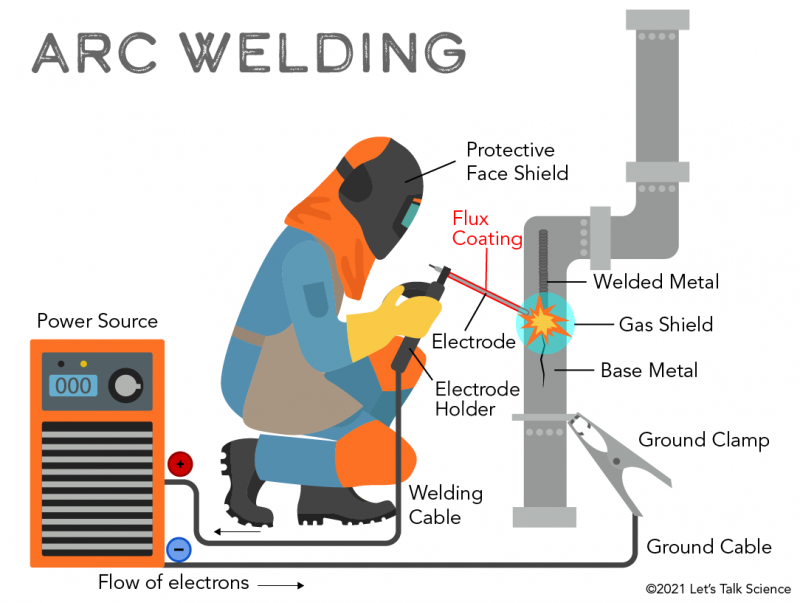The Ultimate Overview to Welding WPS Procedures: An Extensive Summary for Welders
In the complex globe of welding, Welding Procedure Specifications (WPS) offer as the foundation of ensuring quality, consistency, and safety and security in welding procedures (welding WPS). As we dig right into the numerous parts of a WPS and check out the ins and outs of credentials and accreditation, we will certainly discover the crucial function these procedures play in the world of welding.
Significance of WPS Procedures
Comprehending the relevance of Welding Treatment Specs (WPS) procedures is vital for making certain the top quality and stability of bonded frameworks. WPS treatments offer as a roadmap for welders, describing the required actions, specifications, and materials required to attain a sound weld. By adhering to WPS standards, welders can ensure consistency in their job, leading to trustworthy and structurally sound welds.
Among the key reasons WPS procedures are important is their role in preserving weld quality and integrity. Adhering to the defined welding specifications and techniques laid out in the WPS aids stop flaws such as porosity, splitting, or incomplete blend, which can jeopardize the stamina and durability of the weld. In addition, WPS treatments are critical for making sure compliance with industry requirements and codes. By complying with established WPS guidelines, welders can show that their job satisfies the needed needs for safety and top quality, supplying assurance to clients, examiners, and regulatory bodies. Essentially, the relevance of WPS procedures can not be overemphasized, as they are fundamental to accomplishing consistent, high-quality welds that fulfill sector criteria and specifications.

Parts of a WPS
A Welding Treatment Requirements (WPS) commonly comprises essential components that detail the specific demands for carrying out a weld, ensuring uniformity and quality in the welding process. The vital components of a WPS consist of necessary variables such as base steels, filler metals, preheat and interpass temperature levels, welding processes, securing gases, welding settings, and post-weld warm treatment demands.
Base steels refer to the products being signed up with, while filler steels are utilized to load the void in between the base steels during welding. The welding process describes the particular strategy to be used, whether it's gas metal arc welding (GMAW), protected steel arc welding (SMAW), or one more technique. Welding positions specify the orientations in which welding can be done.

Credentials and Certification
Having actually developed the crucial components of a Welding Procedure Requirements (WPS), the emphasis currently shifts in the direction of the crucial facets of credentials and certification in welding techniques.

Certification, on the various other hand, is the official recognition of a welder's credentials by an appropriate certification body or organization. Welding certifications are normally based on the particular welding procedures, materials, and settings a welder is qualified to collaborate with. Holding a valid welding accreditation shows that a welder fulfills industry standards and is proficient to execute welding tasks to the needed specs.
Producing a WPS
To create a Welding Treatment Specification (WPS) that meets industry criteria, cautious factor to consider of welding processes, materials, and operational parameters is vital (welding WPS). The primary step in developing a WPS is to recognize the welding procedure to be made use of, such as gas steel arc welding (GMAW) or secured metal arc welding (SMAW) When the welding procedure is figured out, the next why not find out more crucial aspect is choosing the suitable products, considering elements like base metal kind, density, and joint style. Functional specifications such as welding existing, voltage, traveling speed, and securing gas structure need to additionally be diligently specified in the WPS.

Executing and Monitoring WPS
Upon completing the extensive Welding Treatment Spec over at this website (WPS) that meticulously details welding procedures, materials, functional criteria, and quality assurance steps, the focus shifts to properly executing and keeping track of the well-known treatments. Application entails ensuring that all welders entailed in the job are acquainted with the WPS and follow it thoroughly during the welding procedure. Reliable application and monitoring of the WPS are essential for making certain the honesty, stamina, and safety and security of the bonded joints, inevitably contributing to the general success of the welding task.
Conclusion
To conclude, understanding and adhering to Welding Procedure Specs (WPS) is vital for welders to ensure quality, uniformity, and security in their job. By knowing the elements of a WPS, acquiring appropriate qualifications and certifications, creating comprehensive procedures, and implementing and checking them effectively, welders can boost their abilities and proficiency in welding methods. Following WPS procedures is important for producing top notch welds and meeting market requirements.
In the detailed globe of welding, Welding Treatment Specs (WPS) serve as the foundation of guaranteeing quality, uniformity, and safety in welding procedures. The welding process lays out the certain strategy to be utilized, whether it's gas metal arc welding (GMAW), shielded metal arc welding (SMAW), or another method.To create a Welding Treatment Specification (WPS) that meets sector requirements, careful factor to consider of welding procedures, products, and operational parameters is essential. The first step in producing a WPS is to identify the welding process to be made use of, such as gas steel arc welding (GMAW) or secured steel arc welding (SMAW)Upon finalizing the thorough Welding Procedure Spec (WPS) that diligently details welding procedures, products, functional criteria, and top quality assurance measures, the emphasis moves to effectively implementing and monitoring the well established treatments.